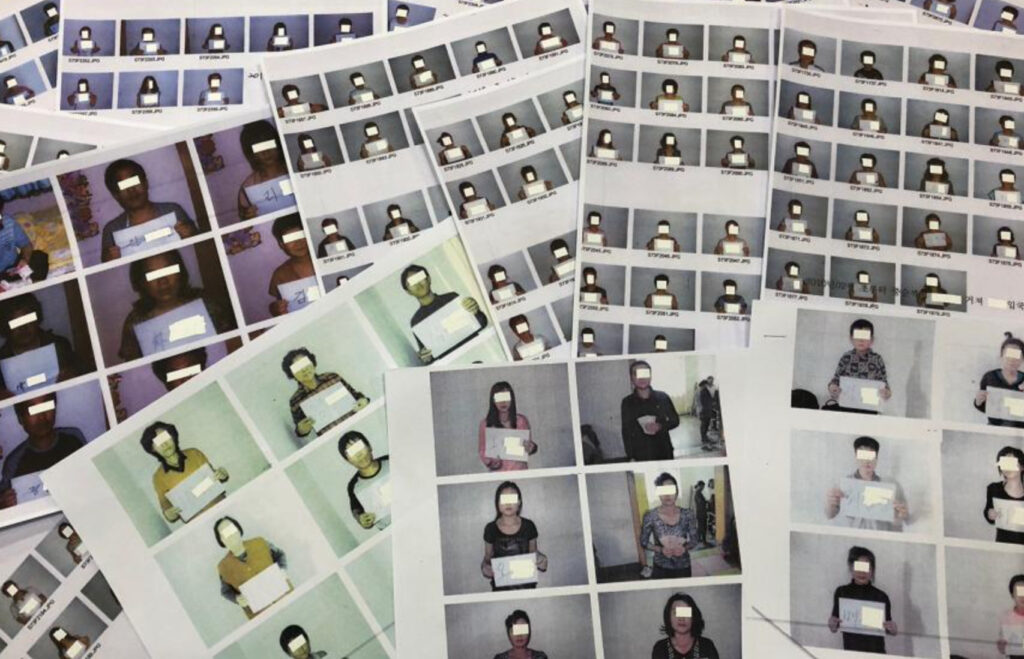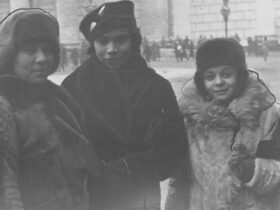LOS ANGELES — North Korea fired at least one submarine-launched ballistic missile (SLBM) on Oct. 19, the first SLBM fired since October 2019. News of a missile launch from North Korea is a current topic of interest in the media. To many, it seems that the country has picked up the pace of its nuclear weapons testing in recent months and now poses a threat to South Korea and the United States, in particular.
However, the hyperfixation on North Korea’s military tactics often minimizes focus on those suffering directly from international and domestic institutions and entanglements. For decades, North Korean citizens have faced an ongoing humanitarian crisis.
In 2019 alone, 1,047 North Korean refugees arrived in South Korea, fleeing the persecution of dictator Kim Jong-Un’s repressive regime.
Defection from North Korea is not a new phenomenon for the peninsula. South Korea’s Ministry of Unification reported relatively steady numbers of refugees in the past two decades, peaking at 2,914 refugees in 2009.
Liberty in North Korea (LiNK), a nonprofit organization based in Long Beach, California and Seoul, South Korea, assists refugees in leaving North Korea. LiNK also outlines the conditions refugees face that drive them to defect from the country. Among them are isolation, indoctrination, a system of violent repression, and less commonly, indirect exposure to foreign countries.
One challenge is forced isolation from the world beyond North Korea’s borders. Citizens have limited access to technology and are prohibited from leaving the country unless explicitly part of an elite group, such as diplomats or athletes who receive “ideological debriefs” upon their return. Radios are restricted to select government channels and internet connection to communicate with foreign countries is nonexistent.
Through propaganda campaigns and direct enforcement of information repression, Kim and his predecessors have embedded the principle of North Korean supremacy in the country’s education system, media, home life and social culture. Freedom of speech, religion, movement, and information is kept under strict monitoring to uphold these conditions.
Consequences for political dissent are severe and often include torture, imprisonment in political prison camps, forced labor, forced starvation and physical and sexual violence. There are also a total of 318 confirmed public execution sites at which all citizens are forced to watch public executions. LiNK’s website offers more detailed descriptions of the experiences of the North Korean people. These conditions, alongside extreme poverty, a poor public health system, and widespread famine, result in thousands of North Koreans defecting, or fleeing the country, in search of improved living situations.
Others may be encouraged to leave through exposure — albeit illegal — to foreign countries. According to Woori Lee, a senior and president of Liberty in North Korea’s student-run branch at USC, there are small black markets called jangmadang where North Koreans can obtain illegal South Korean or Hollywood-related merchandise and technology.
“That’s when they start realizing that North Korea is not a good country to live in,” Lee said.
Regardless of the reason for defection, the dangerous journey is far from simple.
The minimum 2,700 mile escape begins with crossing the North Korea-China river border on boat, then traveling through Vietnam, Laos and, finally, Thailand. Upon arrival in Thailand, the refugees will turn themselves in to the Thai authorities, who rather than deport them will give them a minor immigration violation. They are processed and detained in holding cells until enough North Koreans arrive to load them on a bus headed for Bangkok’s South Korean embassy. From there, the refugees arrive in South Korea, are granted immediate citizenship and begin the societal integration process.
The total time frame, if executed smoothly and without problems, can have the refugees arriving in Thailand within 10 days and in South Korea within a month.
This is a simplified description of the exhaustive journey. The means of transportation between countries are neither efficient nor safe, and certainly not so simple. Buses are a common mode of travel through China, but the rides are hours-long without rest, and there’s the constant risk of being pulled over by Chinese authorities, discovered and repatriated. The refugees must remain inconspicuous.
Crossing between borders of one country to the next is particularly dangerous, especially when leaving China means leaving behind chances of physically blending in with the local population. The refugees must sneak past Vietnamese border police under the cover of night and endure more bus and car rides through the country.
Entering Laos presents the challenge of hiking through rainy, mountainous terrain of the Vietnam-Laos border on foot. This is especially difficult for elderly or child refugees who may not have the physical strength. After being driven through Laos, the refugees reach the Mekong River that will take them to Thailand and subsequent safety.
The entire defection process depends heavily on the coordination of those assisting the refugees in their travels, who must have a detailed understanding of each country’s laws and escape routes and ability to adapt to constantly changing dangers. The journey is time-sensitive as well — even something as objectively minimal as missing a checkpoint because of poor weather conditions (communication is limited) can jeopardize the whole operation and panic those assisting.
And for these refugees, getting caught and sent back means facing dangerous, and even fatal, consequences. Often times, caught defectors and their families face torture. For China, especially, Lee said the country’s willingness to return refugees likely stems from a close connection between the two governments.
“North Korean refugees are not recognized as a refugee in China, and then when they’re caught, they’re sent back to North Korea,” Lee said.
In fact, North Korean refugees are not recognized as refugees anywhere, which makes defection much more difficult.
“It’s just very complicated,” Lee said. “It’s not [the United Nations’]ardent focus… if they apply for refugee status they could get it potentially but it takes so long, like three years, four years. Also, once they get refugee status it’s not like they can choose the country they would like to go.”
In spite of these potential dangers, there are a number of people and organizations willing to guide the refugees from China to South Korea and foot the expenses of their escapes. The Washington Post lists brokers, Christian groups and other activist organizations as potential facilitators. Brokers are paid upfront by North Koreans for means of traveling through China, while other organizations may receive outside funding.
“LiNK itself has a rescue team dispatched in China that has rescued over 1,200 refugees in its time as a nonprofit and fundraises the 3,000 dollars that each refugee costs to safely transport,” Lee said.
After a successful escape, the resettlement process begins when the refugees arrive in South Korea. After investigation and a debriefing by the intelligence agency, the refugees spend three months in a government-run resettlement education facility called Hanawon. Here they’re taught the necessities of functioning in South Korean society — how to use an ATM, public transportation, job skills, set up with a mobile phone and bank account — and are also given a chance to integrate into their local communities. LiNK, for example, provides opportunities for North Korean refugees to volunteer and hosts community events of North and South Koreans alike to prevent social isolation.
Upon completion of Hanawon, they are assigned a public rental home, given food to last a few days and a counsellor. From then on, the refugees are expected to lead relatively independent lives.
The Ministry of Unification provides an overview of support systems North Korean refugees are provided with, including settlement benefits (a single-person household receives eight million KRW), housing subsidies and arrangements, social welfare, educational support, employment support, and a network of support workers available for services such as counseling and personal protection.
Aside from facilities run directly by the South Korean government, there are other organizations designed to aid North Korean refugees. Lee is the founder and president of one called Aurora NK — an international, student-run organization that focuses on education, legal aid and health care.
Aurora NK’s educational goal is to help refugees improve their English language skills by matching students with free volunteer English tutors.
“I lived in South Korea and I know the English conversation program can be very expensive,” Lee said. “North Koreans, they’re of course [a]low-income population.”
Aurora NK also helps refugees who want to achieve legal status in the United States through assistance with translation, visa interviews, and connections to free lawyers. Finally, Lee said the organization provides healthcare scholarships to select refugees, courses for refugees to become certified counselors and offers both a one-on-one and group mental health counseling program in coordination with the Ministry of Unification.
Mental health is also a prevalent struggle that refugees face. According to BBC, “many defectors will have suffered extreme trauma but are unlikely to seek help or know where to find it.” A survey of North Korean refugees in South Korea shows that 15% admit to having suicidal thoughts — 10% higher than the South Korean average.
“PTSD, it’s almost inevitable… [for]North Korean refugees just because [of]how much they have been gone through,” Lee said.
In 2019, North Korean refugee Han Sung-Ok and her six-year-old son were found starved to death in their rental apartment. Neighbors reported Han as distracted and anxious, but little was done to help her. Her mental health struggles seem to coincide with economic difficulties, as well. Police reported that the last time Han was seen alive, she withdrew the remaining 3,858 KRW (about $3.20) from her bank account.
Infuriated questions were raised about how the South Korean government and refugee organizations were unaware of these circumstances. It seems that Han purposely kept herself isolated from any companions, as little was known about her personal life, but many still found it appalling that Han and her son suffered the same fate they escaped from in leaving North Korea.
Sokeel Park, South Korea country director of LiNK, acknowledges that mental health services require improvement, social change and awareness to encourage more people to seek help. Mental health issues can be exacerbated by feelings of isolation and rejection by peers, who sometimes will treat refugees as “others.”
The struggles of North Korean refugees don’t end when they cross the North Korean border into China. Furthermore, their experiences are often trumped by North Korea’s political role on the world stage.
“I wish people know more about the peoples’ story, not just Kim Jong-Un and nuclear weapon[s],” Lee said.





